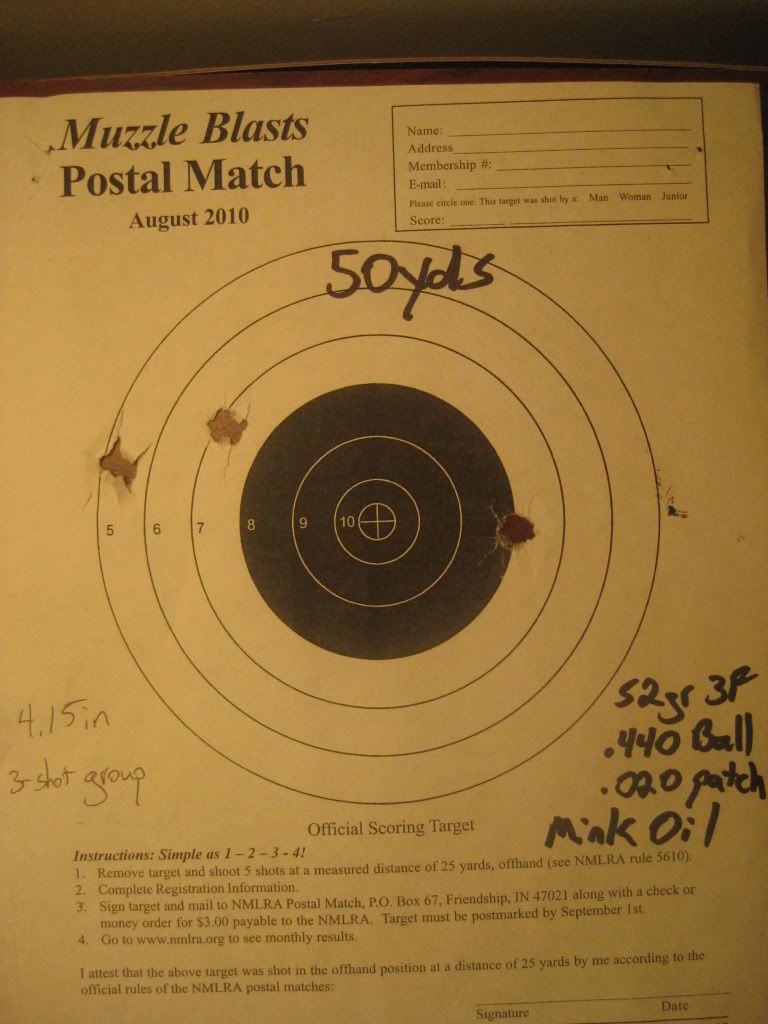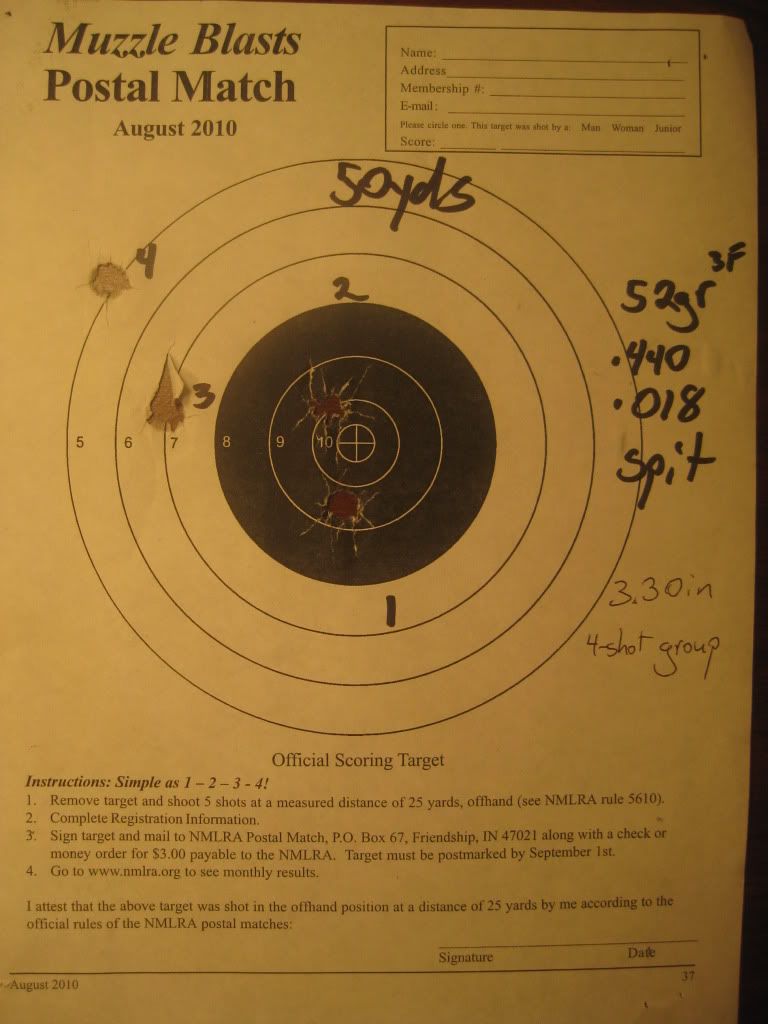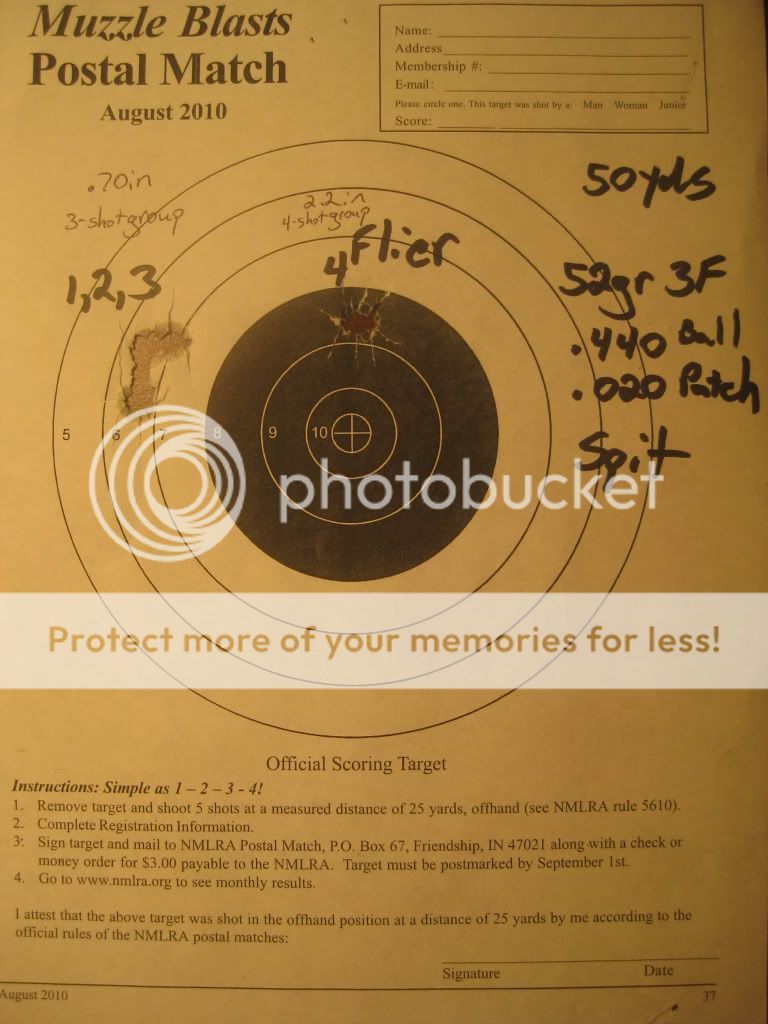Well, I've been having some interesting range sessions in trying to find a load that my rifle wants to gravitate towards. I have a 44in,.45 cal, round-bottom grooved barrel that twists 1/56.
I've tried everything from 40gr to 65gr and when I do get a good group, it's with my 52gr powder charger that I made. So, I keep revisiting it and that's what all my photos are of. I'm getting 3in + groups with anything other than the 52gr measure at 50 yards. My first couple of range sessions produced horribly cut .018 patches and badly frayed .020 patches on the lands. I did a few lapping sessions to the barrel with scotch bright and rem-oil and all the patches come out with just a little bit of fraying now.
However, the consistant tight groups still alludes me. I'll start a target and get excited only to have the group open up an inch or two.
I think I might just have a barrel that's going to need a few hundred rounds put through it before it is going to settle down. I've seem some potential, but its fleeting at the moment.



I've tried everything from 40gr to 65gr and when I do get a good group, it's with my 52gr powder charger that I made. So, I keep revisiting it and that's what all my photos are of. I'm getting 3in + groups with anything other than the 52gr measure at 50 yards. My first couple of range sessions produced horribly cut .018 patches and badly frayed .020 patches on the lands. I did a few lapping sessions to the barrel with scotch bright and rem-oil and all the patches come out with just a little bit of fraying now.
However, the consistant tight groups still alludes me. I'll start a target and get excited only to have the group open up an inch or two.
I think I might just have a barrel that's going to need a few hundred rounds put through it before it is going to settle down. I've seem some potential, but its fleeting at the moment.









